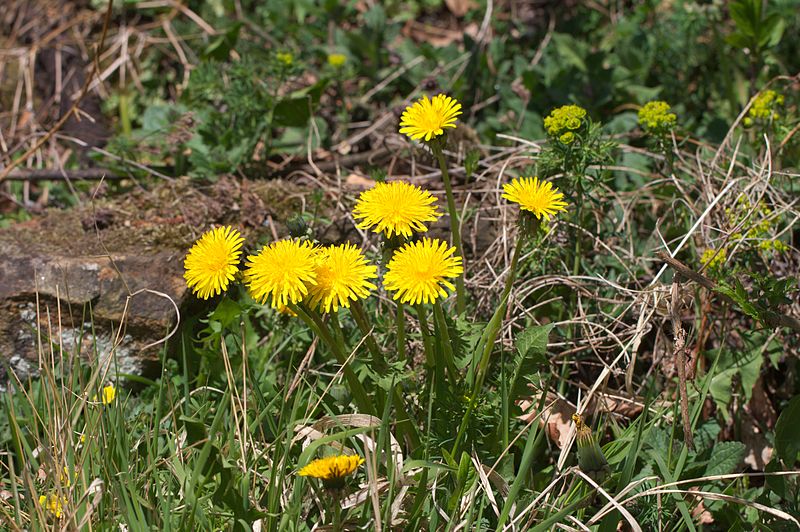Are you killing a friend?
 Thursday, May 2, 2013 at 4:51PM
Thursday, May 2, 2013 at 4:51PM 
This morning I found, in the middle of the curly, box leaf, and Redbor kale, a stack of dandelion greens for sale. $1.99 for a small bunch. I stood and calculated the economic windfall that might be reaped from our lawn. There wasn’t enough potential to cover the cost of building a farm-stand out front but I appreciated how one man’s taraxacum is another man’s poison.
Word count: 458 Reading time: 1-2 minutes
So I googled the yellow blossom. Did you know that it was only in the twentieth century, with the invention of the lawn, that dandelions became the enemy of yard-proud people everywhere? In her book, The Teeth of the Lion, The Story of the Beloved and Despised Dandelion, author Anita Sanchez makes the case for the good side of dandelions, including:
- They are a green and growing first aid kit. For millennia, dandelion tonics have been used to help the body’s filter, the liver, remove toxins from the bloodstream.
- Dandelions are actually good for the lawn and garden. Their wide-spreading roots loosen hard-packed soil, aerate the earth and help reduce erosion. The deep taproot pulls nutrients such as calcium from deep in the soil and makes them available to other plants. Dandelions actually fertilize the grass and other plants.
- They are more nutritious than almost all other vegetables grown in a garden. They were named after lions because their lion-toothed leaves healed so many ailments, great and small: baldness, dandruff, toothache, sores, fevers, rotting gums, weakness, lethargy and depression. Not until the twentieth century was the underlying cause of many of these symptoms realized: vitamin deficiencies. Dandelion leaves have more vitamin A than spinach, more vitamin C than tomatoes, and are a powerhouse of iron, calcium and potassium.
Gardeners hate dandelions partly because it’s the thing to do, the accepted attitude, handed down from generation to generation. Does that make it a gardening cliché? Has it lost its relevance from overuse? I agree that dandelions are an aesthetic blight in an otherwise perfect lawn. But is it necessary to flood the world with chemicals to eradicate them?
In developing memorable stories, it’s important to know which dandelions stay and which ones go. Some clichés will never be eradicated. Perhaps Roy Huggins explains it best: The cliché flourishes in the creative arts because the familiar gives a sense of comfort and security.
Maybe not all clichés are wrong in fiction. Could it be that they are a kind of shorthand that acts as a springboard to other creativity?
When you’re writing and editing, do you occasionally let a cliché slip in? Where have you encountered clichés in fiction that seemed to work well, that you didn’t mind reading because the rest of the story was awfully well told?
***
Photo from Wikimedia Commons by: Atriplexmedia
